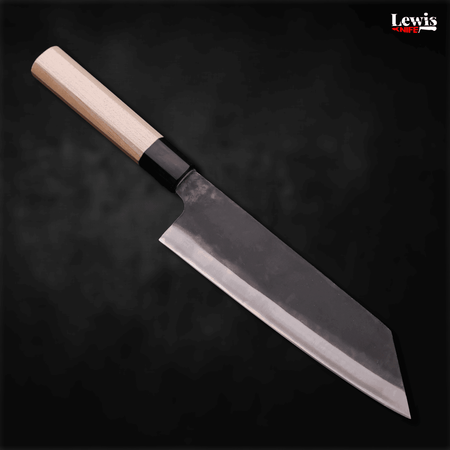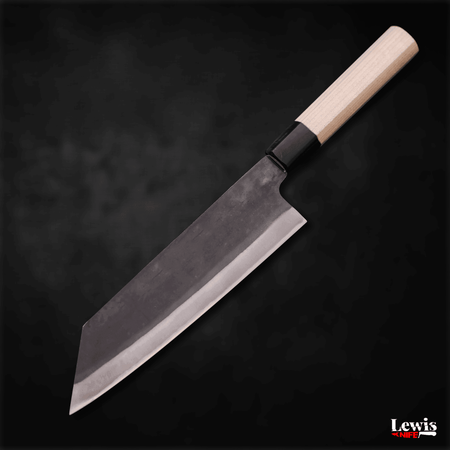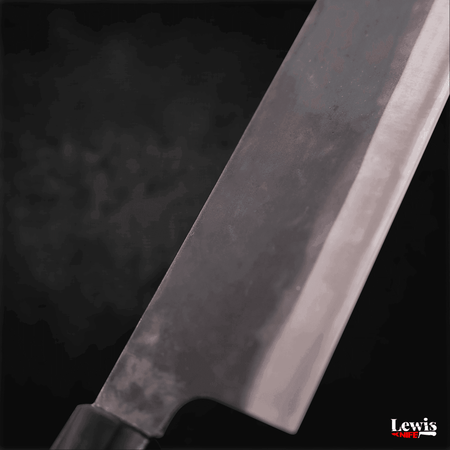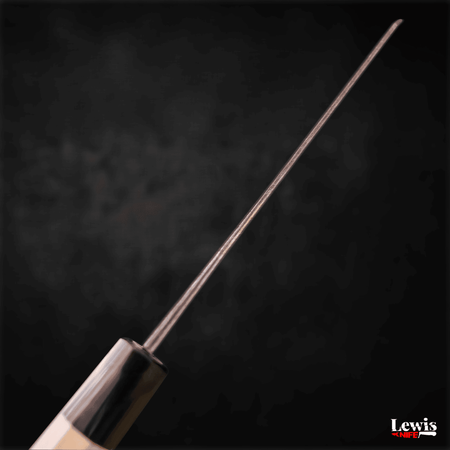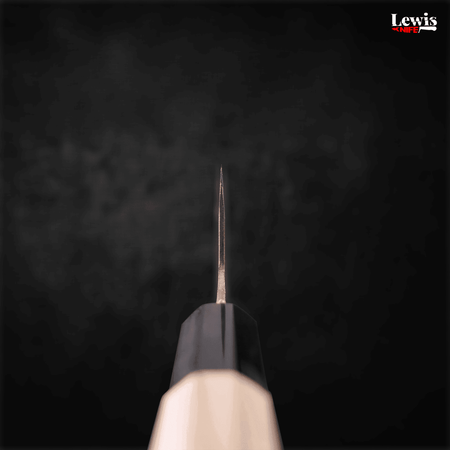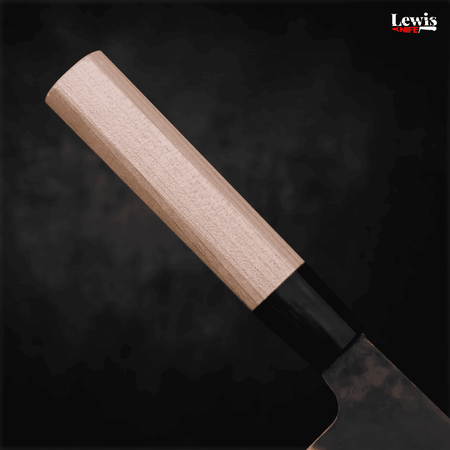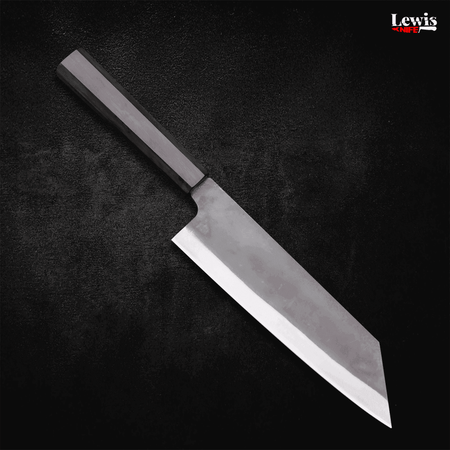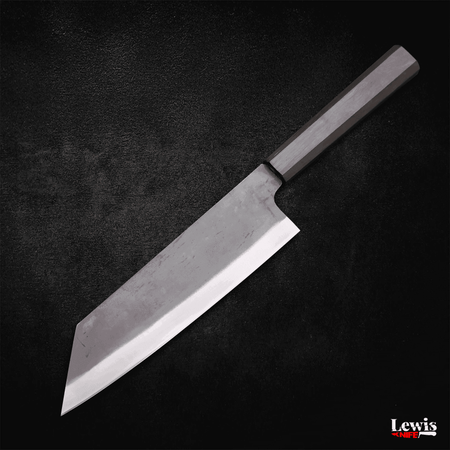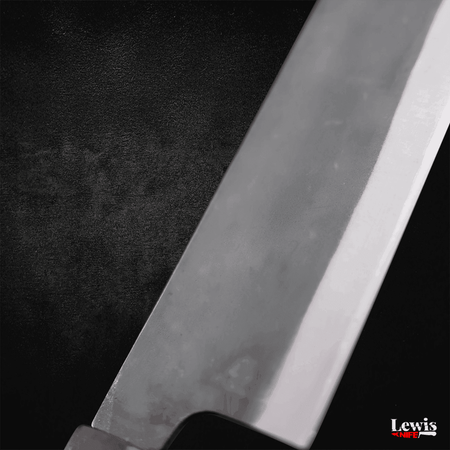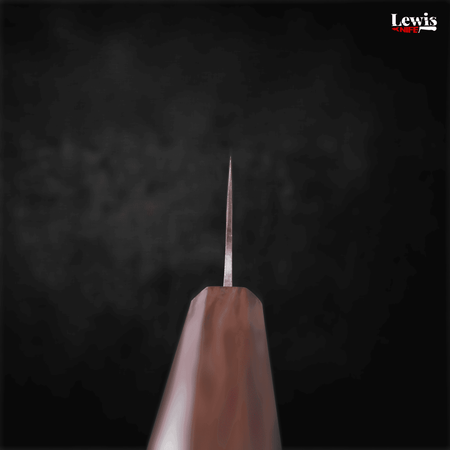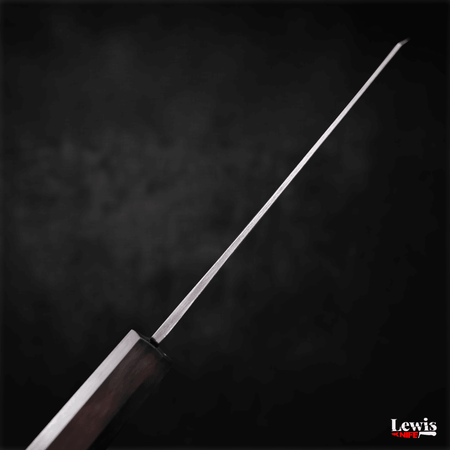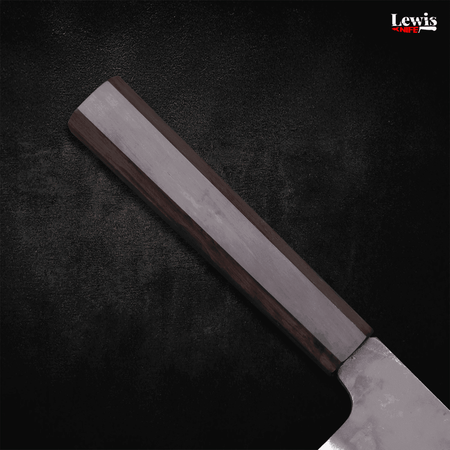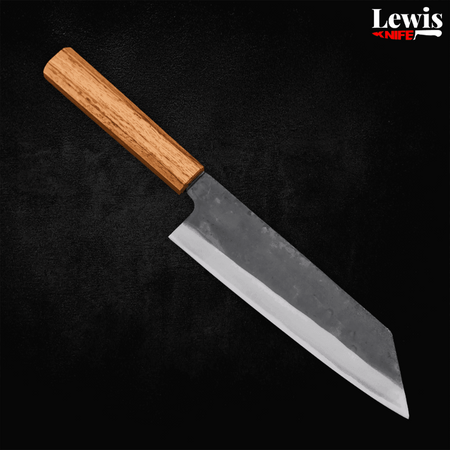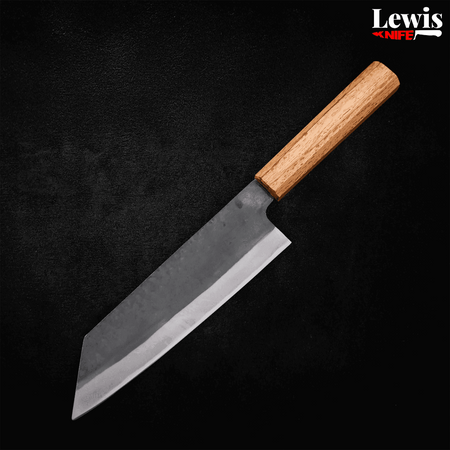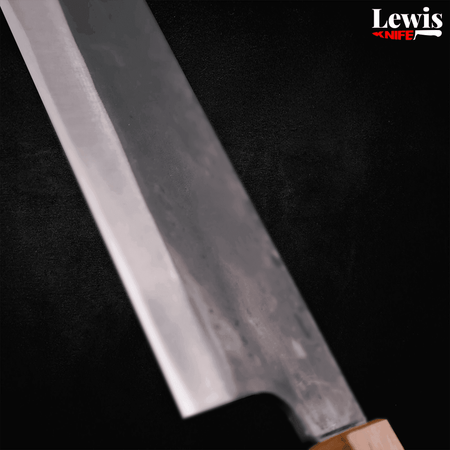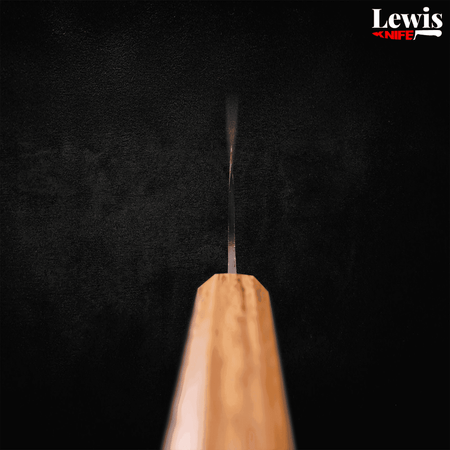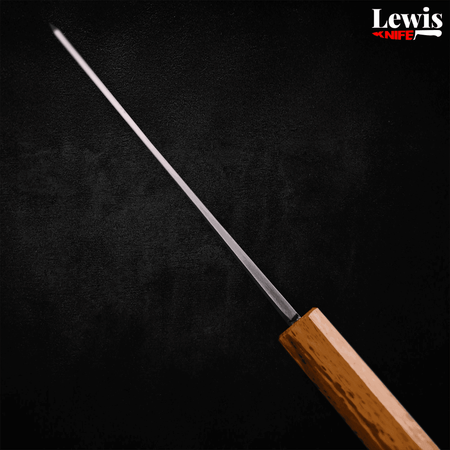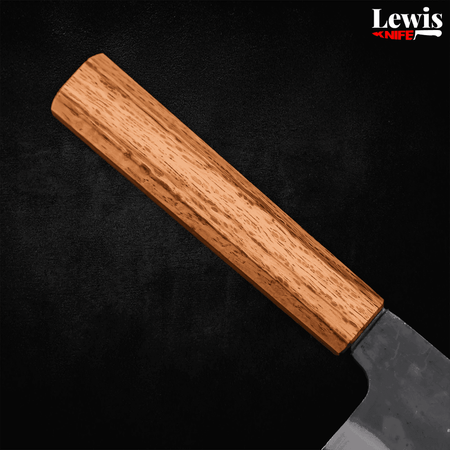Aogami #1 (Blue Steel #1) combines high hardness with excellent sharpness and control, making it perfect for fine prep work in the hands of experienced cooks.
Blue Steel #1 (Aogami #1)
Filter
3 products
-
Sort by
Blue Steel #1 is one of the hardest and sharpest Japanese knife steels available. This steel offers excellent edge retention and cutting feel, especially for fine prep work. While it requires more care than stainless steel, many cooks choose it for the precision it brings to everyday slicing and trimming.
What Is Blue Steel #1?
Blue Steel #1 (also called Aogami #1) is a high-carbon steel made by Hitachi Metals. It’s part of the Yasugi Steel family and widely used in traditional Japanese knives. Therefore, this steel is popular among chefs and serious home cooks for its cutting performance.
Composition (approximate):
- Carbon: 1.25–1.35%
- Chromium: 0.3%
- Tungsten: 1.5–2%
- Hardness: 64–65 HRC when heat-treated
Blue Steel #1 vs Other Japanese Steels
Customers often compare Blue Steel #1 with Blue Steel #2 and White Steel #1. Each has its own trade-offs. See the table below to understand how they differ in the kitchen:
| Steel Type | Hardness | Edge Retention | Sharpening Ease | Rust Resistance | Best For |
|---|---|---|---|---|---|
| Blue Steel #1 | High (~65 HRC) | Excellent | Moderate | Low | Professionals, detail prep |
| Blue Steel #2 | Medium (~62 HRC) | Good | Easier | Low | General use, workhorse knives |
| White Steel #1 | Very High | Excellent | Moderate | Very Low | Clean cuts, traditional knives |
In our experience, Blue Steel #1 is harder and holds its edge better than Blue #2, but is slightly more brittle and slower to sharpen. Compared to White Steel, it’s less reactive but not as easy to polish. Therefore, the Blue Steel #1 knife is a popular choice for professional chefs.
Who Should Use a Blue Steel #1 Knife?
Blue Steel #1 knives offer excellent cutting performance with sharp edges and a comfortable grip. These knives are well-suited for precise kitchen tasks such as slicing fish, trimming meat, and chopping vegetables cleanly.
However, Blue Steel #1 is not recommended for beginners. This steel is prone to chipping if used on bones or hard foods. In experienced hands, though, it provides excellent edge control and results.
This steel is widely used in our traditional Japanese knife lines such as Kiritsuke, Deba, and Petty knives, available in the Lewis Knife collection.
FAQs
-
Blue Steel #1 is harder and holds an edge longer, but it's more brittle and harder to sharpen.
-
Yes. Blue Steel #1 is carbon steel and prone to rust if not properly maintained. Clean and dry it after every use. You also should use light oil to help prevent oxidation.
-
Not really. Blue Steel #1 knife requires sharpening skills and regular care. If you’re new to Japanese knives, try the Blue Steel #2 knife as your first choice.

